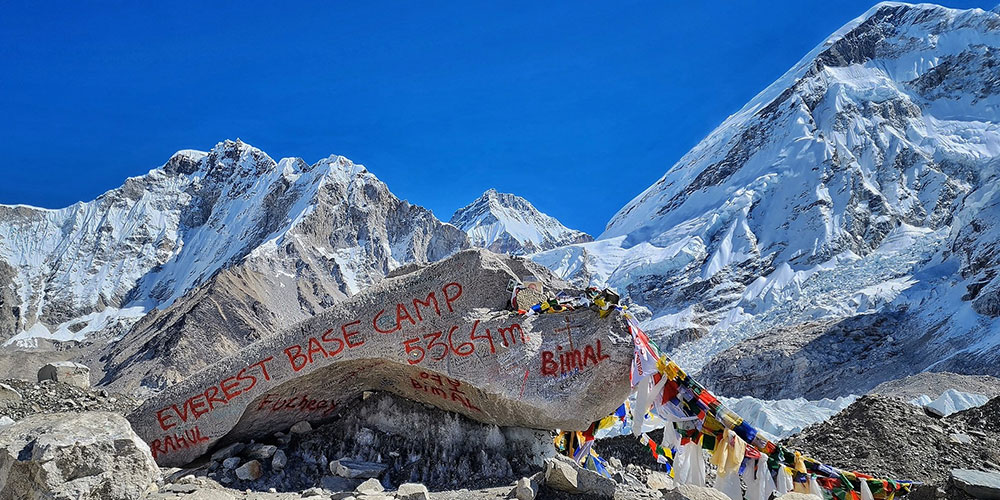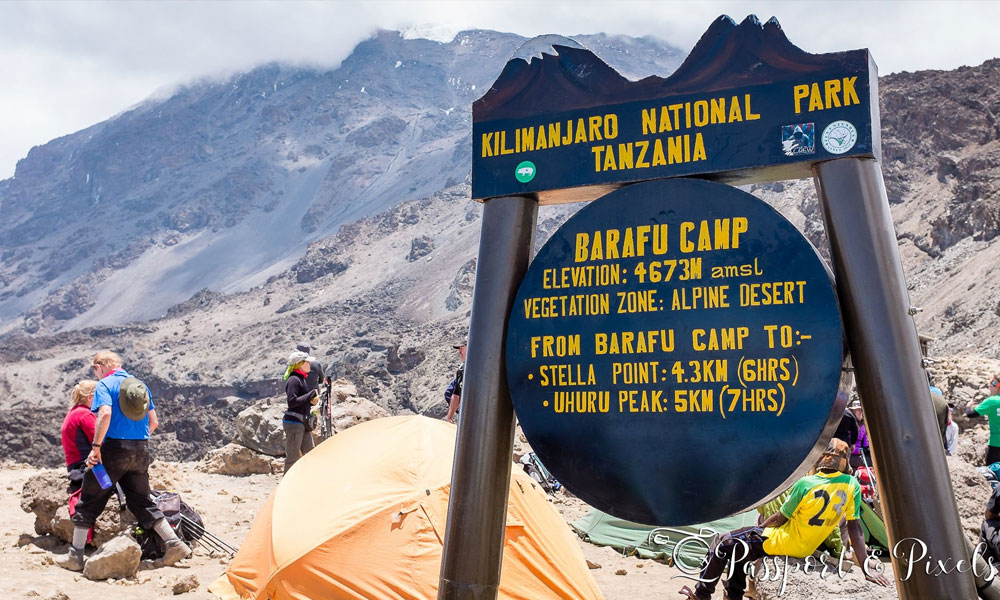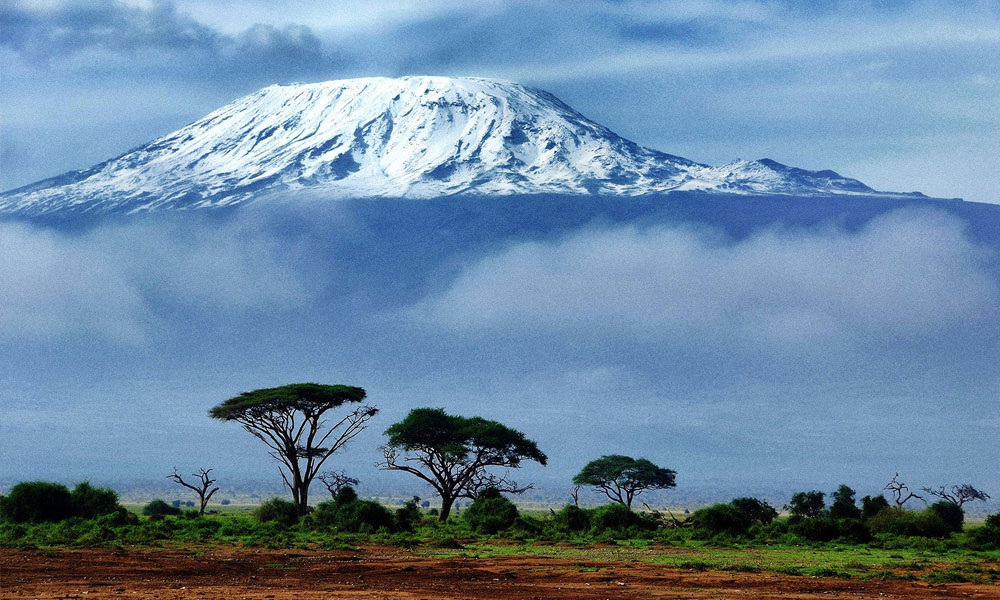A fantastic way to unwind and become stress-free is to take a trekking trip in Nepal instead. When you go hiking in Nepal, you tend to gain a new perspective regarding the place and enjoy this trekking destination in its pure wonder. This is why trekking is so popular among every adventure buff these days. So, are you up for a trekking trip for your upcoming vacation in Nepal and seeking to test the limits of your boundary?
Before diving deep into the Everest Base Camp vs Kilimanjaro: Which is Difficult, let's dive into an overview of these treks.
Difficulty Level – A Very Important Consideration
One of the essential things to remember while selecting your trekking destination in Nepal is the difficulty level. The number of kilometers, elevation, and terrain of the place will determine the difficulty level of the trek you will go. Obviously, for your trekking trip, you will like to choose a destination that makes you feel complete and also proves helpful for you to challenge yourself for a new daredevil experience to remember forever. The trekking difficulty level can be classified into the following:
Easy: Those trails which are shorter with minimal elevation gains.
Moderate: Trails that have steady ascents with some of the other obstacles.
Difficult/Strenuous: Steeper and longer trails include debris, rocks, and roots.
Therefore, depending on the above classifications, you must pick your trekking destinations. If you are stuck in a dilemma as to whether to go to Kilimanjaro or the Everest Base Camp, then let us tell you that both come under the strenuous trekking category because one is the tallest mountain in Africa and the other is the tallest mountain on Earth. Before deciding which is difficult to hike, let us get acquainted with both destinations.
Everest Base Camp

The Great Himalayas are home to the tallest peak in the world- Mt. Everest, a mountain range full of wonder and splendor. Hiking the mountain peak is not only expensive but also a time-consuming and difficult exercise. You should not feel disheartened as the Everest Base Camp is available. Even the most inexperienced trekkers can enjoy the views of the iconic Mt. Everest without even troubling themselves with the ordeal of hiking the summit by opting to trek in the Everest Base Camp to fulfill their adventure urge.
 Yes, the trek is challenging, but the scenery around it is worth it. You are exposed to a scenario that becomes an experience for a lifetime. The moment you lay your eyes on the snow-covered summit of Everest, you will forget about all the sufferings you had to endure to reach there. Along with that, you can catch a glimpse of the spectacular and diverse wildlife of the area, like mountain goats, different bird species, Himalayan snow cocks, and more. In terms of costs, also Everest Base Camp is cheaper and helps you save a lot of your hard-earned money. This is how it becomes the most preferred choice of many adventure geeks worldwide.
Yes, the trek is challenging, but the scenery around it is worth it. You are exposed to a scenario that becomes an experience for a lifetime. The moment you lay your eyes on the snow-covered summit of Everest, you will forget about all the sufferings you had to endure to reach there. Along with that, you can catch a glimpse of the spectacular and diverse wildlife of the area, like mountain goats, different bird species, Himalayan snow cocks, and more. In terms of costs, also Everest Base Camp is cheaper and helps you save a lot of your hard-earned money. This is how it becomes the most preferred choice of many adventure geeks worldwide.
See more: Everest Base Camp Trek Difficulty Level | Everest Base Camp Elevation and FAQs | Training for Everest Base Camp
Approximate Altitude: 18, 513 ft.
Trekking Season: March to May and October to November.
Difficulty Level: Difficult.
Best For: Photography, Wildlife, Mesmerizing Views, and Culturally More Enticing Experience to receive.
Drawbacks: Too crowded, food availability is less, and the trekking trail is strenuous.
Duration for the Trip: 2 weeks.
Closest Airports: Kathmandu in Nepal.
Accommodation Options: Hotels, lodges, camp tents, and tea house accommodations.
Success rate: 90%
Tips for a Trekking Trip to Everest Base Camp: Carry enough money and food. Also, pack clothes that are suitable for extreme weather conditions. Make sure that you stay hydrated, and don't forget to carry a camera for sure. After all, you would like to capture the moments to cherish forever.
Popular Trek Routes: The trekking trail generally goes through the Khumbu Valley and Sagarmatha National Park and back to the base camp. Sometimes, several tourists also opt for offbeat routes like the Gokyo Lakes Trek, Tumlingtar Trek, Jiri Trek, and Lukla to Tengboche Trek.
Mount Kilimanjaro

From the world's tallest peak, let us come to the tallest mountain range in the African region, also known by the metaphor – the 'Roof of Africa'- Mount Kilimanjaro. Vast stretches of savannahs surround this dormant volcanic peak. Two places that you must stop by during a trekking trip to Kilimanjaro that you should plan are Crater Camp and Lava Tower. Crater Camp houses some awe-inspiring natural ice sculptures, and Lava Tower is a tall volcanic structure of around 300ft.
Hiking Kilimanjaro is undoubtedly difficult, but even beginners can conveniently opt for this destination. It is possible because the trekking trail is comparatively shorter, and even the time spent at the elevated height is short. Food around the area is conveniently available and is fresh for consumption. The best part about Kilimanjaro is that there are seven trekking trails. Since many climbers' bucket list contains Kilimanjaro, the routes will likely be crowded even with multiple routes available. Climbing Kilimanjaro without a crowd is a way to enjoy the trek.
Approximate Altitude: 19, 340 ft.
Trekking Season: January to March and October.
Difficulty Level: Difficult.
Best For: Less crowded, fresh food available, and ideal for even novice hikers.
Drawbacks: Expensive, and not much wildlife is present there.
Duration for the Trip: Approximately seven days.
Closest Airport: Kilimanjaro, Dar es Salaam, Kenya & Nairobi.
Accommodation Options: Tents, huts, and nearby hotels.
Success rate: 40%
Tips for a trekking trip to Mount Kilimanjaro: Book your tickets well in advance, especially for the peak season. You can choose one of the seven routes according to your fitness level and prepare yourself mentally and physically for the trip.
Popular Trek Routes: Machame, Mweka, Umbwe, Shira, Rongai, Marangu, and Lemosho.
Is Kilimanjaro a Difficult Trek Compared to Everest Base Camp?

Before deciding whether the Kilimanjaro trek is harder than the Everest Base Camp, it is essential to note that both treks provide different surreal experiences. The trekkers and adventure freaks can find many unmatched attributes that can't be compared. It is worth exploring one in the specific connotations; none can be downgraded or devalued. The similarity between both Kilimanjaro and Everest Base Camp is that these destinations have high altitudes, and the difficulty level of both treks is strenuous, becoming a lifetime experience for the trekkers.
Kilimanjaro is one of the seven summits (others being Vinson, Puncak Jaya, Mount Everest, Denali, Mauna Kea, and Aconcagua), and Kilimanjaro is considered to be the easiest among these seven summits. The summit day is generally very tiring on Mount Kilimanjaro, whereas you will require high fitness and endurance for trekking at Everest Base Camp. Keep these crucial factors in mind when comparing both. It will help you make an informed decision. Below, we provide different views on the difficulty between Everest Base Camp and Kilimanjaro based on some facts
Acclimatization Issues
Acclimatization is how your body gets used to environmental differences, such as pH, humidity, altitude, temperature, etc. If one considers the issues of acclimatization, then Everest Base Camp at the altitude of 5365 meters rises gradually and one gets lots of time to get acclimatized to the altitude changes. Once acclimatized, one can enjoy the trekking trip at the Everest Base Camp in high spirits and finds that an easy experience during the trekking.
When one considers the altitude of Kilimanjaro, which is 5895 meters, it is more than the base camp of Mt. Everest, and the trek tends to elevate much more rapidly compared to the elevation gains of Everest Base Camp. Due to this, Mount Kilimanjaro trek routes tend to become more stressful and strenuous as well. The success rates of many trek routes of Kilimanjaro are low due to the elevation gain.
The final Ascent of Kilimanjaro is Difficult
The biggest challenge while trekking on Kilimanjaro is the summit's final ascent, which is usually undertaken overnight. The final ascent starts from the routes around 1200 meters below the summit, making it the most daring trek ascent of the Kilimanjaro trekking trip. It tests the guts and the endurance of even the most experienced trekkers. Additionally, the temperature and scenery around the area during the summit day are also not very pleasing- making the whole experience even drearier and horrible. Therefore, trekkers must showcase maximum determination to achieve the goal.
The days required for trekking make Kilimanjaro more cumbersome
The Everest Base Camp trip is usually over in around 14 days, and approximately 75 miles are covered during the entire trip. While if you compare this with the Kilimanjaro trekking trip, approximately 50 miles are covered within a week, making the entire schedule completely rushed. Thus, people might find the week-long trek cumbersome, giving them time to breathe.
Accommodation options also make a difference
We know comfort and sound sleep are extremely important during a trekking trip. In Nepal, you can get hold of the comfy accommodation options like the availability of many tea houses and lodges, etc., to spend your nights and to refill your energy. But in Kilimanjaro, you will usually have to camp out living in tents or huts, which might make it harder for a person who prefers comfort above everything else.
You may also like:
 Everest Base Camp Private Helicopter Tour
Everest Base Camp Private Helicopter Tour- Mountain Flight to Everest from Kathmandu
- Everest Base Camp Luxury Trek
Making the Mount Kilimanjaro trek easier
But if you play smart and choose your trek route for the trekking trip to Kilimanjaro, you can avoid being tired and straining yourself. Multiple routes are there; some routes are tougher than others, like Shira or Umbwe, so you can safely avoid these. Some trek routes give you more time for acclimatization, like Lemosho, and are less challenging yet appealing, like Rongai. It all depends on how you plan things and what strategies you take to make things easier. Don't make your decision in haste. Do extensive research and plan things after comparing broader and narrower aspects to make your adventure trip joyful.
As we said earlier, both trekking destinations have different things to offer you in the context of their specific connotations. Therefore, don't ponder over which is harder than the other. Why not go for both trekking trips and decide for yourself for an unforgettable experience in life? Challenging oneself twice and trekking two of the world's seven summits. Isn't it an idea of firm determination? Right! Simply explore both for your cherishing memories. If you want to have the honor of trekking your way to the Everest Base Camp despite it being more difficult, you can take on our recommended trek package- Short Everest Base Camp Trek and we will make sure to make your trek much more easier!
